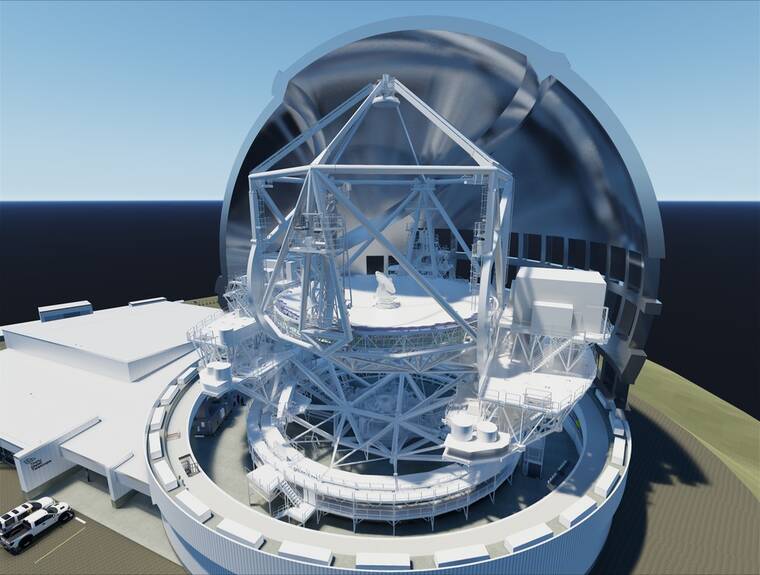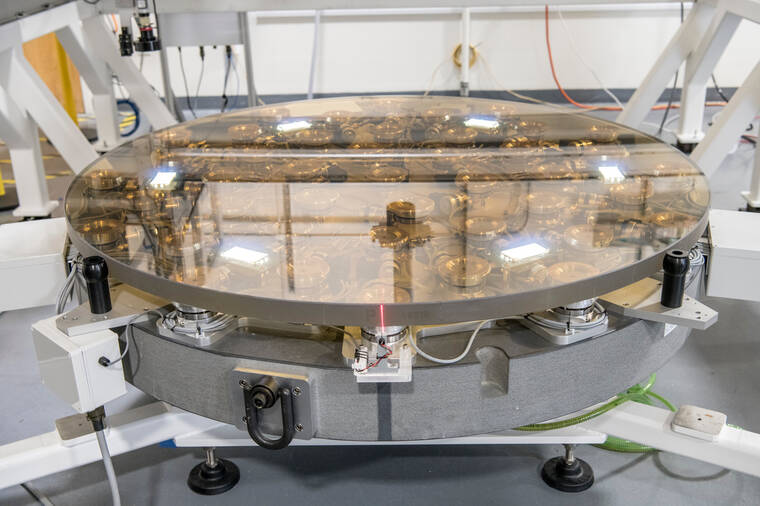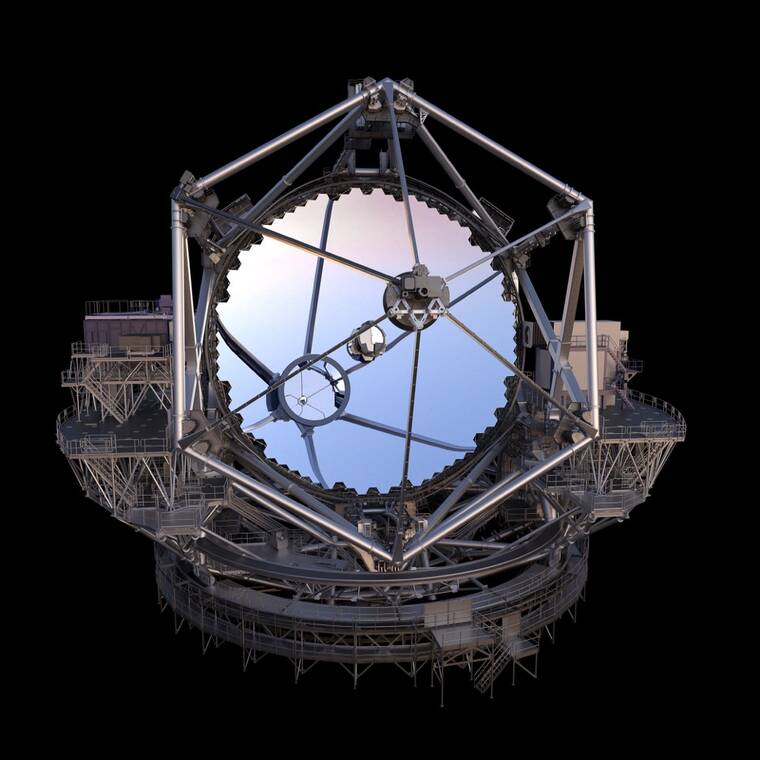Good news and bad news for astronomers’ biggest dream
The United States should commit $1.6 billion to building an “extremely large telescope” that would vault American astronomy into a new era, according to the National Science Board, which advises the National Science Foundation.
In a statement on Feb. 27, the board gave the foundation until May to decide how to choose between two competing proposals for the telescope. The announcement came as a relief to American astronomers, who have been fretting about losing ground to their European colleagues in the quest to examine the heavens with bigger and better telescopes.
ADVERTISING
But which of the two telescopes will be built — and the fate of the dreaming and the billions of dollars’ worth of time and technology invested already — remains an open question. Many astronomers had hoped that the foundation, the traditional financier of national observatories, would find a way to invest in both projects.
The two projects are the Giant Magellan Telescope at Las Campanas in Chile and the Thirty Meter Telescope, possibly destined for Maunakea. Both would be larger and more powerful than any telescope currently on Earth or in space. Each is expected to cost some $3 billion or more, and less than half the projected cost has been raised so far by the international collaborations backing them.
In an announcement circulating among astronomers, the board said that funding even one telescope at the price point of $1.6 billion would take up most of the foundation’s typical budget for construction.
“Moreover, the priorities of the astronomy and astrophysics community must be considered in the broader context of the high-priority, high-impact projects for the many disciplines that N.S.F. supports,” the board said in its statement.
So far, astronomers with a stake in the outcome have been careful to note that Congress, as well as the White House and the science foundation, would eventually all have their say.
“This is a marathon, not a sprint,” said Robert Kirshner, director of the Thirty Meter Telescope International Observatory and a former member of the Giant Magellan team. He added that he was hopeful that both telescopes could go forward.
Michael Turner, an emeritus cosmologist at the University of Chicago and a former assistant director for mathematical and physical sciences for the foundation, called the recent development “excellent news for U.S. astronomy and saw “a realistic path forward” for an extremely large telescope.
“Before you know it, the telescope will be dazzling us with images of exoplanets and the early universe,” he said. “Should it have happened faster? Of course, but that is history. Full speed ahead, eyes on the future!”
Wendy Freedman, a cosmologist at the University of Chicago who led the Giant Magellan project in its first decade, said in an email: “I am very pleased that the N.S.B. has decided to fund an E.L.T. I think that the worst outcome would have been not to fund any E.L.T. at all; that would have been a tragedy! Realistically (and unfortunately), there is not a budget for two. But an E.L.T. is critical for the future of U.S. astronomy.”
She added, “So I am very relieved.”
Robert Shelton, president of the Giant Magellan collaboration, said: “We respect the National Science Board’s recommendation to the National Science Foundation and remain committed to working closely with the NSF and the astronomical community to ensure the successful realization” of an extremely large telescope, “which will enable cutting-edge research and discoveries for years to come.”
But Richard Ellis, an astrophysicist at University College London who was one of the early leaders of the Thirty Meter Telescope project, told Science, “It’s a tragedy, given the investment made in both telescopes.”
The power of a telescope to see deeper and fainter objects in space is largely determined by the size of its primary mirror. The largest telescopes on Earth are 8 to 10 meters in diameter. The Giant Magellan would group seven 8-meter mirrors to make the equivalent of a 25-meter telescope; the seventh and final mirror was cast last year, and workers are ready to pour concrete at the site on Las Campanas.
The Thirty Meter would be composed of 492 hexagonal mirror segments, scaling up the design of the twin 10-meter Keck telescopes being operated on Maunakea by the California Institute of Technology and the University of California. (The 100th segment was just cast in California, but protests by Native Hawaiians and other critics have prevented any work on the TMT site on Maunakea; the project group has been considering an alternative site in the Canary Islands.) Neither telescope is likely to be ready until the 2030s.
Even as the American-led effort progresses, the European Southern Observatory is building an extremely large telescope — called the Extremely Large Telescope — at the Paranal Observatory in Chile. Its main mirror, composed of 798 hexagonal segments, will be the biggest and most powerful of all — 39 meters in diameter. It will also be the first among the competitors to be completed. European astronomers plan to start using it in 2028. If the effort is successful, it would be the first time in a century that the biggest functioning telescope on Earth is not on American soil.
Both the Giant Magellan and the Thirty Meter telescopes are multinational collaborations and their headquarters are a few miles apart in Pasadena, California.
Support from the NSF has been a point of contention between the two groups from their beginnings 20 years ago.
In 2019, the two groups agreed to join forces to create an American ELT program, under the purview of the National Optical-Infrared Research Laboratory in Tucson, Arizona, that would allow American astronomers to use both telescopes. Astro 2020, a blue-ribbon panel of the National Academies of Science, endorsed the proposal, calling it the top priority in ground-based astronomy for the decade. The panel recommended that the science foundation chip in $1.6 billion to buy part ownership in one or both of the telescopes.
But the costs of these telescopes has continued to rise, and $1.6 billion doesn’t go as far as it once did. And the wheels of the scientific community and the federal government turn slowly.
“That process takes three to five years,” said Linnea Avallone, chief officer for research facilities at the NSF. “We’ve been engaged for just a bit over a year. I don’t think we’re dragging our feet; I don’t think we’re not being aggressive. She added that the foundation was being “very good stewards of the taxpayers’ money.”
Did she see a risk to the United States not funding an Extremely Large Telescope of its own?
“That’s a good question, better answered by astronomers,” Avallone said.




